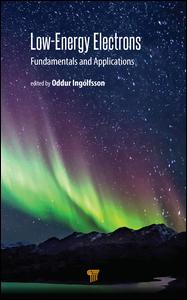

Most ebook files are in PDF format, so you can easily read them using various software such as Foxit Reader or directly on the Google Chrome browser.
Some ebook files are released by publishers in other formats such as .awz, .mobi, .epub, .fb2, etc. You may need to install specific software to read these formats on mobile/PC, such as Calibre.
Please read the tutorial at this link: https://ebookbell.com/faq
We offer FREE conversion to the popular formats you request; however, this may take some time. Therefore, right after payment, please email us, and we will try to provide the service as quickly as possible.
For some exceptional file formats or broken links (if any), please refrain from opening any disputes. Instead, email us first, and we will try to assist within a maximum of 6 hours.
EbookBell Team

4.3
98 reviewsLow-energy electrons are ubiquitous in nature and play an important role in natural phenomena as well as many potential and current industrial processes. Authored by 16 active researchers, this book describes the fundamental characteristics of low-energy electron–molecule interactions and their role in different fields of science and technology, including plasma processing, nanotechnology, and health care, as well as astro- and atmospheric physics and chemistry. The book is packed with illustrative examples, from both fundamental and application sides, features about 130 figures, and lists over 800 references. It may serve as an advanced graduate-level study course material where selected chapters can be used either individually or in combination as a basis to highlight and study specific aspects of low-energy electron–molecule interactions. It is also directed at researchers in the fields of plasma physics, nanotechnology, and radiation damage to biologically relevant material (such as in cancer therapy), especially those with an interest in high-energy-radiation-induced processes, from both an experimental and a theoretical point of view.